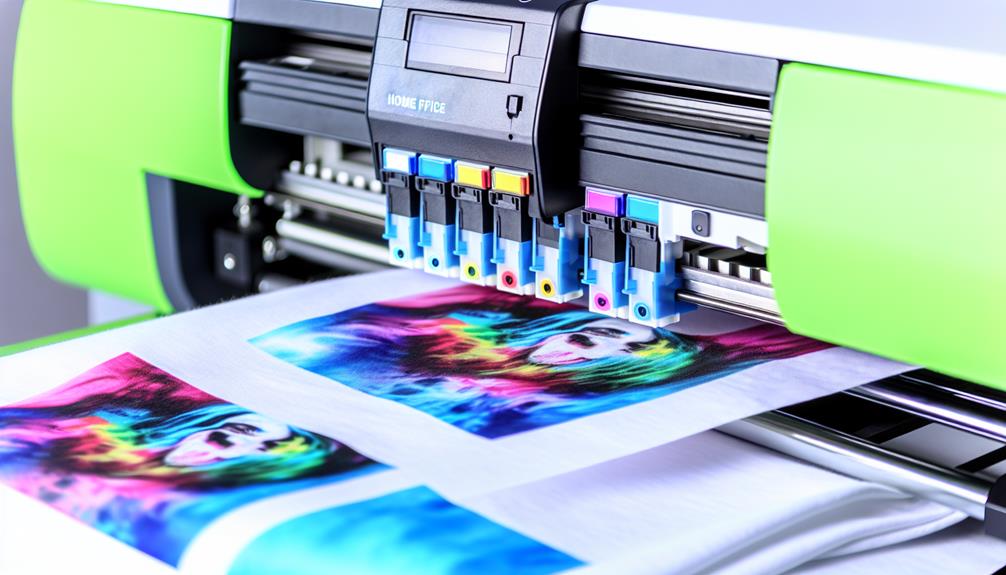
“Understanding the Components of High-Quality DTF Transfers”
Introduction
In the world of custom apparel and textile design, Digital Transfer Film (DTF) printing has emerged as a game changer. With its ability to produce vibrant, long-lasting prints, DTF technology is taking the industry by storm. But what exactly are the components that make up high-quality DTF transfers? In this extensive article, we will delve into the various elements that contribute to outstanding DTF prints DTF Prints and help you understand why they matter.
From the machinery involved in DTF printing to the inks and films used, each component plays a significant role in achieving top-notch results. Whether you're a seasoned professional or just starting your journey in direct-to-film printing, this guide will equip you with essential knowledge about DTF transfers.
Understanding the Components of High-Quality DTF Transfers
High-quality DTF transfers rely heavily on several factors including equipment, materials, and techniques. Let’s break down these components.
1. The Direct to Film Printer: A Crucial Component
The direct to film printer is the heart of any DTF printing operation. These printers are specifically designed to handle specialized inks and films for creating vibrant designs.
Types of Direct to Film Printers
- Inkjet Printers: Most modern DTF printers utilize inkjet technology for precision.
- Eco-Solvent Printers: These are great for outdoor applications due to their durability.
Choosing the right printer can significantly influence print quality.
2. The Role of Ink in DTF Printing
Ink selection is vital when it comes to producing stunning DTF prints.
Types of Inks Used in DTF Transfers
- Water-Based Inks: Eco-friendly but may not be as durable.
- Solvent Inks: Provide excellent vibrancy and longevity.
The choice of ink directly affects color fidelity and wash resistance.
3. Films: The Canvas for Your Designs
Film quality can determine how well designs adhere to garments during heat transfer.
Types of Films Used in DTF Printing
- Polyester Films: Affordable but may not provide rich colors.
- PET Films: Offer better durability and vibrant colors.
Investing in high-quality films is crucial for achieving professional results.
4. Heat Transfer Processes: The Final Step
Heat transfer is where all components come together to create a finished product.
How Heat Transfer Works in DTF Printing
The process involves applying heat and pressure:
Understanding this process helps ensure successful outcomes every time!
5. Quality Control: Ensuring Consistency
Maintaining quality throughout production is vital for customer satisfaction.
Key Quality Control Measures
- Regularly checking printer calibration
- Conducting test prints before large runs
- Inspecting final products for defects
These measures ensure consistent high-quality outputs.
6. Understanding Color Profiles and Settings
Color accuracy is paramount in creating appealing designs.
Importance of Color Profiles
Using correct profiles ensures that what you see on-screen matches your printed output accurately.
7. Pre-treatment Solutions: Why They Matter
Applying pre-treatment solutions helps fabrics accept inks better, resulting in vivid prints that last longer.
Types of Pre-treatment Solutions
- Water-based pre-treatments
- Solvent-based pre-treatments
Choosing the right solution depends on fabric types and desired outcomes.
FAQs About Understanding DTF Transfers
1. What Are DTF Transfers?
Answer: DTF transfers are designs printed on a special film that can be transferred onto garments using heat and pressure, allowing for vibrant colors and intricate details.
2. How Long Do DTF Prints Last?
Answer: When applied correctly, DTF prints can last several washes without fading or cracking, making them an excellent choice for custom apparel.
3. Can I Use Any Printer for DTF Printing?
Answer: No, you need specialized direct-to-film printers designed specifically for handling inks used in DTF printing to achieve optimal results.
4. Is There Any Special Preparation Needed Before Applying DTF Transfers?
Answer: Yes! Properly pre-treating fabrics enhances adhesion and color vibrancy; however, it varies depending on the fabric type used.
5. What Fabrics Work Best with DTF Transfers?
Answer: DTF Cotton blends work exceptionally well with DTF transfers; however, polyester fabrics also produce excellent results due to their smooth surface finish.
6. Do I Need a Heat Press Machine for Applying DTF Transfers?
Answer: Yes! A heat press machine ensures even distribution of heat and pressure necessary for successful transfer application.
Conclusion
In conclusion, understanding the components of high-quality DTF transfers is critical for anyone looking to excel in direct-to-film printing. From selecting the best direct to film printer to choosing appropriate inks, films, and ensuring proper application techniques—each element contributes towards creating stunning final products that your customers will love!
By investing time into learning about these components, you're setting yourself up not only as a proficient user but also as an authority within this growing field! So gear up your machines and let’s get printing!
This comprehensive overview aims at providing valuable insights into "Understanding the Components of High-Quality DTF Transfers." By focusing on each element's significance while keeping things friendly yet informative throughout—this article seeks not only share knowledge but also inspire creativity among readers!